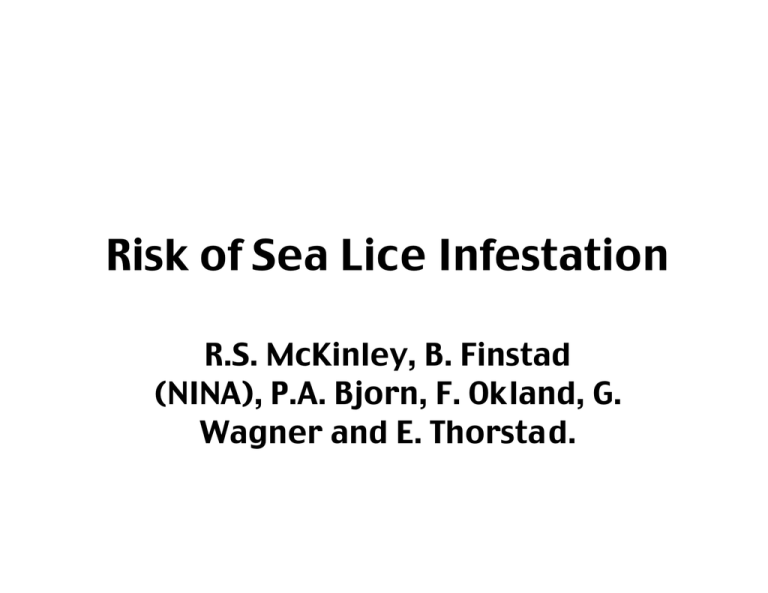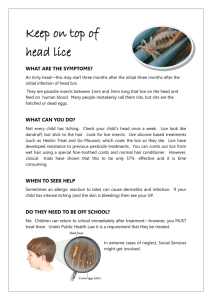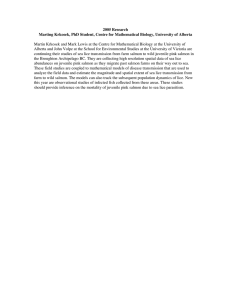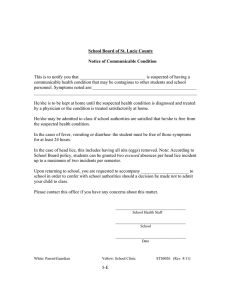Risk of Sea Lice Infestation R.S. McKinley, B. Finstad
advertisement

Risk of Sea Lice Infestation R.S. McKinley, B. Finstad (NINA), P.A. Bjorn, F. Okland, G. Wagner and E. Thorstad. background I naturally occurring ectoparasite I lice infestation levels in wild and farmed salmon vary geographically I high infestation levels of lice are known to affect osmoregulatory function I infestation levels vary among salmonids I what lice level affects performance objective I Determine if cardiac and swimming performance in adult Atlantic salmon is affected by increasing levels of sea lice infestation Lice Infestation Evidence 0.7-1.6 lice g-1 cause morbidity G At what level is overall health at risk? N food acquisition N migration (swimming performance) N predator avoidance N reproduction G Lice levels in the wild I vary considerably and among species from 0.002 to 2.1 lice g-1 (1 to 200 lice per individual) I susceptibility to lice appears related to time spent by fish in nearshore waters I sea trout/arctic charr appear more susceptible than Atantic salmon Levels examined 0.13 lice g-1 I Low: 0.02 lice g -1 I Controls: no lice I Moderate: Methods G Swimming Performance Testing N Ucrit = V + (t ·_t -1) _v, in BL s -1 G Cardiac Output N (Q) by direct measure, in ml min -1 kg-1 G blood parameters N Chloride, glucose, cortisol Dorsal Aorta Gill Arch Sinus Gill Filaments AtriumVenosus Doppler Ventral Bulbus Ventricle Flow Probe Aorta Arteriosus Results Moderate Low Control Reg. C.I. 3.0 Ucrit (bl s-1) 2.5 2.0 1.5 r ? = 0.24 p = 0.017 0.00 0.05 0.10 0.15 Relative Infestation -1 (lice g ) 0.20 2.8 2.7 2.6 2.5 2.4 Ucrit (bl s-1) 2.3 * 2.2 2.1 2.0 1.9 0.0 Moderate Low Lice Treatment Control 50 Moderate Low Control 40 Cardiac 30 Output (ml g-1 min-1) 20 10 0 70 60 Heart Rate (beats min-1) 50 40 0 0.8 0.6 Stroke Volume (ml beat-1 g-1) 0.4 0.2 0.0 Rest Ucrit Activity State Rest Ucrit *a A 200 b b 150 Chloride -1 (mg ml ) 100 50 0 6 B a 5 Glucose -1 (mg ml ) * * a 4 b 3 2 1 0 300 250 Cortisol -1 (ng ml ) C * 200 150 100 50 0 Moderate Low Control Lice Infestation Summary G Swimming performance significantly decreases at moderate levels of sea lice G Moderate levels of lice > > > > reduce swimming performance contributes osmotic imbalance chronic stress response alters heart rate





